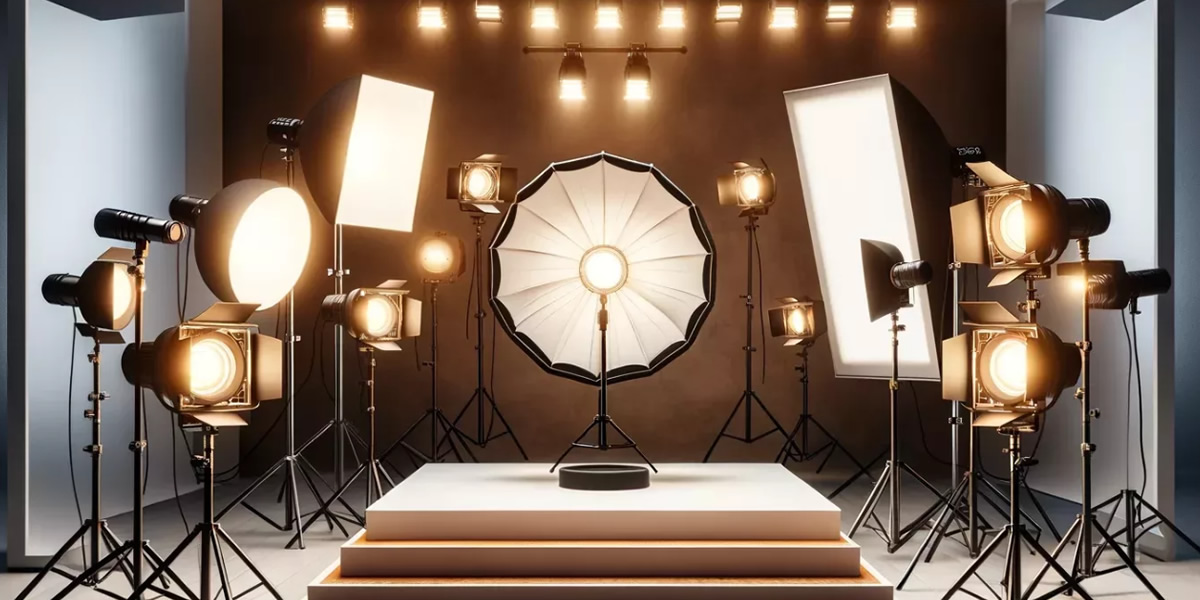Continuous Light or Flash Light?
When considering a light in the world of photography and lighting, it can be difficult to decide. As in every industry, there are many options available in the lighting and photography industry. This article will help you understand the confusion surrounding this process and answer the crucial question of whether to choose continuous light or flash.
What is Continuous Light?
A continuous light is any light source that continuously illuminates our shooting area. From a photography perspective, continuous light options can be narrowed down to LED or fluorescent-based lights. Fluorescent-based lights are more affordable when compared to other lighting options. For high-end video and photography, choosing LED lights is essential. The key features of LEDs are their longevity, easy adjustment to variable color temperatures, and lack of flicker. Continuous LED lights are the closest competitor to flashes.
-
LED Panels
LED panels are essentially composed of LED light strips arranged in a grid. LED panels have varying light emitting capacities and are typically powered by an internal lithium-ion battery and/or electrical power.

LED panel lights are slim lighting devices with large surface areas, designed to emit uniform, soft light. They are preferred for photography, video production , and indoor lighting, providing a continuous, energy-saving light source that's easy on the eyes.
-
COB LED
It's a continuous light source. It typically produces a constant, bright light with low energy consumption. It's particularly used in video production. COB LED lights (Chip-on-Board LED) are a type of light source used in LED lighting technology. The key feature of COB LEDs is that multiple LED chips are tightly packed together on a single surface. This provides a more intense light and a more efficient lighting solution compared to traditional LEDs.

Cob LED is preferred in places that require large and high-power lighting.
What is a Flash Light?
A flash is a short-duration, intense light source used in photography. It fires momentarily during a shot, illuminating the surroundings and freezing a specific moment in the scene to capture the image. Flashes emit powerful light for a fraction of a second, enabling clear and bright photos, especially in low-light conditions or during action scenes. They can be mounted externally on the camera or used as standalone light sources in studio settings.
Flashes
- Flashes on the Camera Body
- Speedlite Flashes
- Studio Flashes (Strobes - Paraflaş)
Speedlights are preferred by professional photographers who want to control the amount and direction of light. Because the light's power and intensity can be adjusted, photographers can precisely control shadows, highlights, and overall composition. Furthermore, using flash is ideal for achieving dramatic and artistic results by directing the light, especially in portrait photography. Its energy efficiency and lack of overheating also make it easier to use flash lights for extended periods.
Flash lighting isn't used in video recording because it requires a constant, steady light source. Sudden bursts of flash light create unwanted interruptions and irregularities in the video. For a scene to appear continuous and natural, the lighting must be consistent and fluid.
The main difference between flash and continuous light is how and when the light is emitted.

-
What is Paraflash?
A paraflash is a powerful type of flash used in professional studio photography. It's a compact piece of lighting equipment that typically combines a light source, reflector, and power supply. Paraflashes produce high-powered bursts of light that can illuminate large areas, making them ideal for a variety of photography, including portraits, product photography, and fashion photography.
Paraflashes can be used in conjunction with light modifications (such as softboxes, reflectors, and umbrellas) to soften or direct light. Furthermore, because the power output is adjustable, photographers can control the amount of light to create different lighting effects. Paraflashes are an essential piece of equipment widely used in studio shoots for both professional and commercial projects.

What are the main differences between flash light and continuous light?
Flash Paraflash (Strobe Light):
- Light Burst : When triggered, a flash produces a very brief and intense burst of light, usually lasting only a fraction of a second.
- Application: Commonly used in photography. Short bursts of bright light are ideal for freezing action and producing clear, well-lit images.
- Power: Offers high power, which provides powerful illumination with low ISO and small apertures.
- Control: The intensity, direction, and duration of the light are highly controllable, allowing you to precisely adjust lighting conditions, shadows, and highlights.
- Heat: Because light is emitted only for short periods of time, it does not produce much heat.
- Disadvantage: Requires more technical knowledge and precise timing. Not suitable for videos requiring constant light.
Continuous Light:
- Light Diffusion: Continuous light provides constant light throughout the shot.
- Usage Area: Generally used in videography or situations requiring long periods of constant light, such as portrait and product photography.
- Power: Generally less powerful than flash, so higher ISO or wider aperture may be required for correct exposure in photography.
- Control: Continuous light can be controlled in terms of brightness and angle, but it does not provide as much intensity and fine control over shadows as flash.
- Heat: Continuous light can generate a lot of heat, especially with older types (e.g., tungsten), but LED versions are more efficient and run cooler.
- Ease of Use: Because the light is always on, it's easier for novices to use. It allows you to see the light's effect immediately.



SHARE:
Studio Background Types and Colors
How can I make the background white in a product shot?